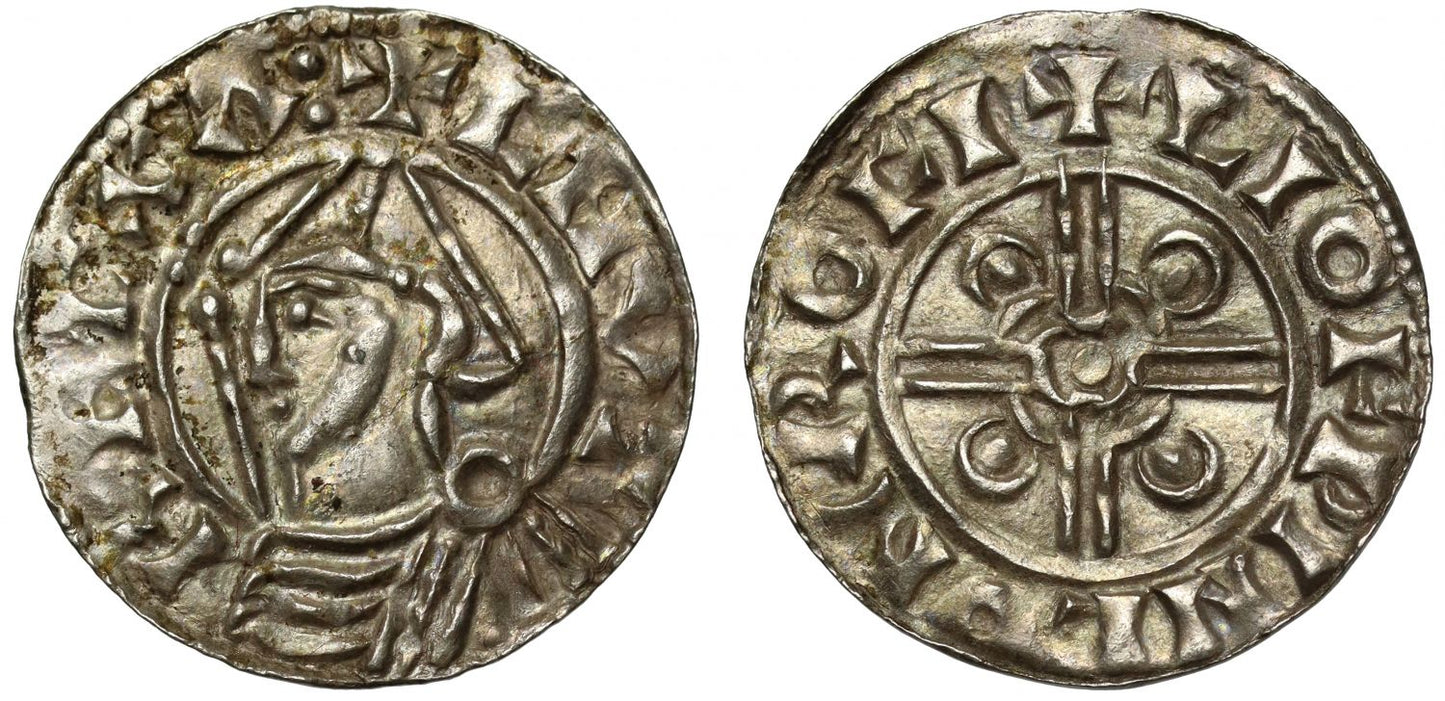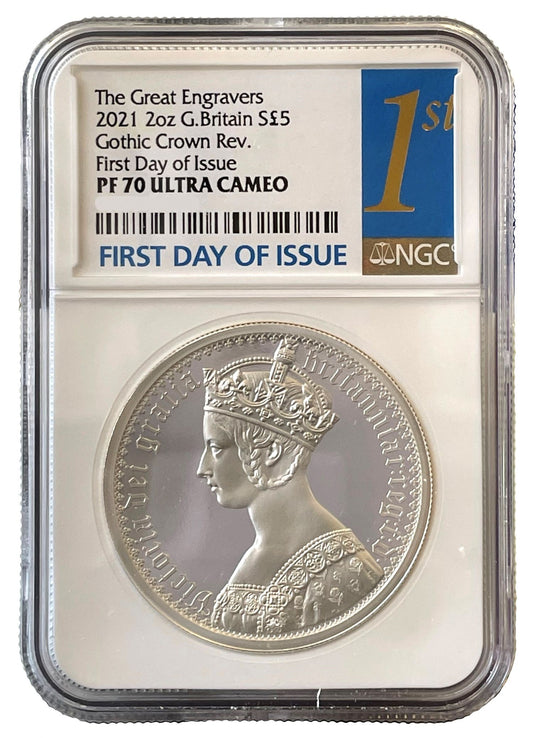FAQs
What makes a coin valuable?
I have coins to sell, what’s the next step?
How will my purchases be shipped?
What happens if I’m not entirely happy with my purchase?
Canute Penny, Pointed Helmet type, Rochester mint, Leofwine
Canute (1016-35), silver Penny, pointed helmet type (1024-30), Rochester Mint, moneyer Leofwine, helmeted bust left with sceptre, legend surrounding commencing at top, CNV T RECX Λ:, rev. pellet in double annulet at centre of voided short cross, broken annulet enclosing pellet in each angle, legend surrounding, +LIOFPINE ON ROFI, weight 0.82g (SCBI -; BMC type XIV; N.787; S.1158).Toned, good very fine, the reverse better with an accomplished moneyer mint script, very rare mint for type, other comparable examples can be seen in the Hulett and Conte collections, otherwise seldom seen for the Pointed Helmet series in this mint.
The legends translate as "Canute King" on obverse and on the reverse "Leofwine of Rochester."
Despite Canute being essentially a Viking King from overseas, the coinages of England continued in a similar vein to those of Aethelred II, in that the types changed every six years, meaning there are three main types for this reign, of which the quatrefoil type was the first. According to North there were up to 74 mints in operation with perhaps four other enigmatic places that remain uncertain. Rochester operated with up to six moneyers in this reign through the first three types.
Canute could have been as young as 21 when he ascended the English throne after the 28thNovember 1016 upon the death of Edmund "Ironside" at Oxford. Though Edmund son of Aethelred II had a younger brother and two infant sons his advisers recognized Canute as successor. Though his birth date is not known, Canute was a commander in his Father's army from 1012, and at first had to settle a number of uprisings amongst the nobility and others, which he quelled by maintaining a large army and navy from heavy taxation. He kept Wessex at first for himself whilst dividing up other areas for regional government under trusted Danish allies. Canute had married Aelfgifu daughter of Ealdorman Aelfhelm of Northumbria, but set her aside to marry Aethelred's widow Emma in 1017 who had fled to Normandy, and this latter union helped maintain the political continuity and tradition of English Kingship. Harald of Denmark died childless in 1018 and Canute used his English troops and finance to extend power to Scandanvia making his infant son Harthacanute titular Governor and heir of Denmark. Canute attempted to invade Sweden, and actually took Norway in 1028 having had a pilgrimage to Rome the year before. Canute left his eldest son by Aelfgifu, Swein to rule Norway and was now the most powerful King of England ever at this time and is likely when the apocryphal story of him trying to vainly order the coastal tide to turn and retreat in front of his courtiers emerged. However, Norway was lost by 1034, Canute did not respond, and he passed away suddenly at Shaftesbury in his mid-forties on the 12thNovember 1035.
The cathedral town of Rochester in Kent lies at the lowest bridging point of the River Medway some 30 miles south east of the centre of the City of London. The first bridging of the Medway at Rochester dates back to late Roman times. The Diocese is the second oldest in Britain after Canterbury with a long line of Bishops dating back to its founding in 604 by St. Augustine, who consecrated St. Justus as the first Bishop. It has been claimed that Witmen type Anglo Saxon gold thrymsa coins may have been struck here. Rochester was one of the main mint towns in the ninth century and the Bishop seems to have been granted the privilege to coin in the reign of Ecgberht. In the laws of Aethelstan the Bishop of Rochester was allowed one moneyer whilst the King had two. The town suffered great slaughter by the Danes in 839 and was ravaged by Aethelred II in 986 just five to ten years before this coins depicting him was minted. Later the town was besieged in the rebellion of Bishop Odo in 1088 and was destroyed by fire in 1130. Rochester was besieged and taken by King John in 1215.
Provenance:
Ex Cambridge Hoard - with a supporting ticket
FAQs
What makes a coin valuable?
I have coins to sell, what’s the next step?
How will my purchases be shipped?
What happens if I’m not entirely happy with my purchase?













